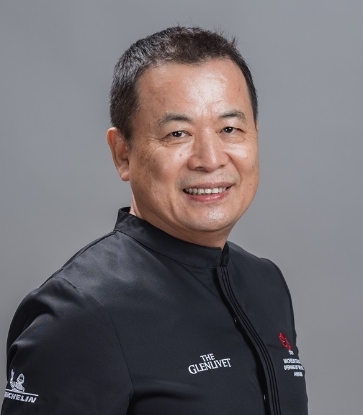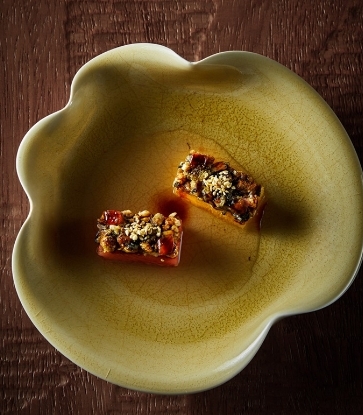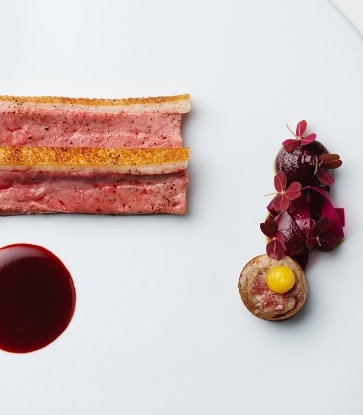After the epidemic warning was raised to level 3, Taichung's one-MICHELIN-Starred Fleur de Sel’s chef Justine Li received many calls from her loyal customers to see whether the restaurant had been affected, many of them sounding more worried than Li herself.

For Li, the love and trust from her customers is something she can never let down. “Because our guests trust us, so for every dish we make, we pay great attention. We never want to disappoint them,” she says.
This has fuelled her passion for learning and driving change, always putting her best effort into every dish and coming up with new creations to delight her customers. On days that the restaurant is open, she’s no doubt in the kitchen and making the dishes herself. If she’s not completely satisfied with a dish, she will restart from scratch without hesitation.

Li takes no shortcuts, even at the end of a meal. Nespresso coffee is served to customers, which was chosen for its consistency in quality. “Each cup of coffee brewed by people may come out slightly different, but we wish for our post-meal coffee to be very consistent,” she explains.

Ingredients come first in creating complex flavours
Li pays extra attention to the quality control of ingredients. For her, coffee marks the start of her day and energises her, but it is also an ingredient that she often uses in her dishes. The coffee’s bitterness and acidity are both flavours that she loves, as they can add depth and character to her creations.
Fleur de Sel serves French cuisine; and Li has a deep respect for traditions and ingredients, but taking the Asian climate and seasons into account, she constantly seeks inspiration in everyday life that can add elements of creativity and surprise into her dishes. “In French, trompe l’oeil means ‘fools the eyes’. What you see may not be what it seems, which injects an element of surprise,” she says.

To make the dish Duck Liver/Apple/Chocolate/Nespresso Nepal Lamjung Coffee, Li first removes the connective tissue from the duck liver, which is then steamed and added to stir-fried apples; the mixture is placed into a mould and cooled. A layer of chocolate and coffee, as well as a chocolate stem, are added as final touches. Li has chosen Nespresso Exclusive Selection Nepal Lamjung for the coffee layer. This coffee has aroma of roasted cereals and fresh toasted bread, which balances out the oiliness of foie gras, giving this rich dish a nice pick-me-up. With a delicate, apple-like appearance, this course amazes diners and blurs the boundaries between savoury dishes and desserts.
Sustainability is the future
Li’s emphasis on ingredients is also connected to her concern for the environment. Fleur de Sel partners with small farms and individual fishermen for the freshest catch. On the menu, Li seldom includes deep-fried dishes; vegetable and seafood dishes make up 80 percent of the menu. This also reflects Li’s personal dietary preference and her consideration for sustainability. Last year, Fleur de Sel launched a vegetarian set menu for the first time, offering an eight-course menu highlighting exquisite local ingredients. “I believe sustainability is the future,” Li remarks.

Wild Penghu Goatfish/Spoon Cabbage/Fermented Passion Fruit Sauce/Basil Oil is a dish crafted by pairing pan-fried goatfish with spoon cabbage produced by a Nespresso partner farm and fermented passion fruit sauce. The partner farm uses recycled Nespresso coffee grounds as an organic fertiliser for its produce. The Penghu goatfish is accompanied with short-necked clams for a satisfying burst of umami, while spoon cabbage elevates the dish with a refreshing sweetness and crispy texture.
Throughout Li’s culinary career, she remains meticulous to every detail and continues to pursue and learn new things. This is her way of giving back to her customers, who have given her their trust and the important task of making their special occasion a perfect one. “They’ve entrusted us with an important day in their lives, and we treasure every opportunity they’ve given us.”
This article was written by Hsieh Ming Ling and translated by Iris Wong. The original article can be viewed here.





















